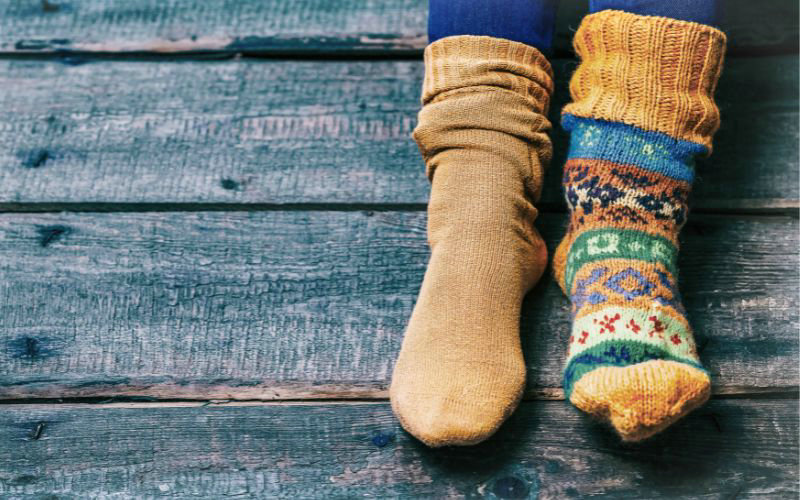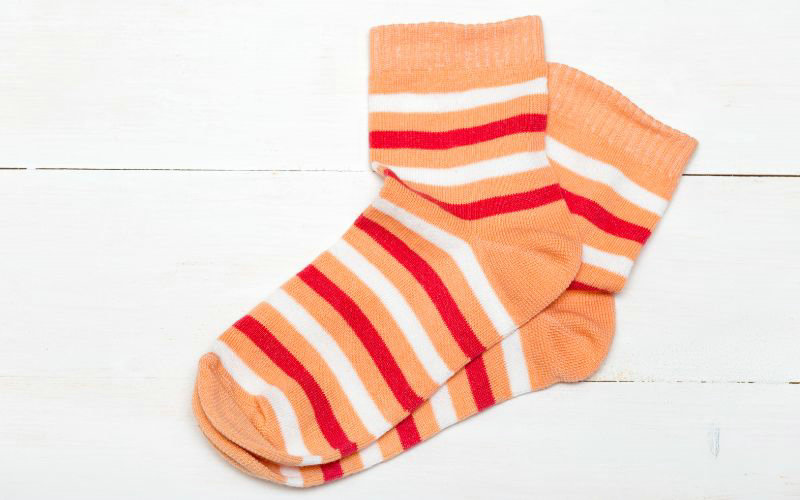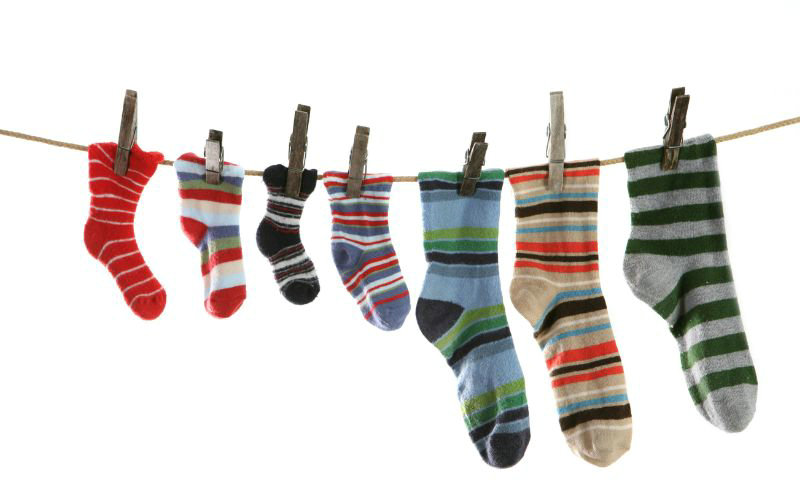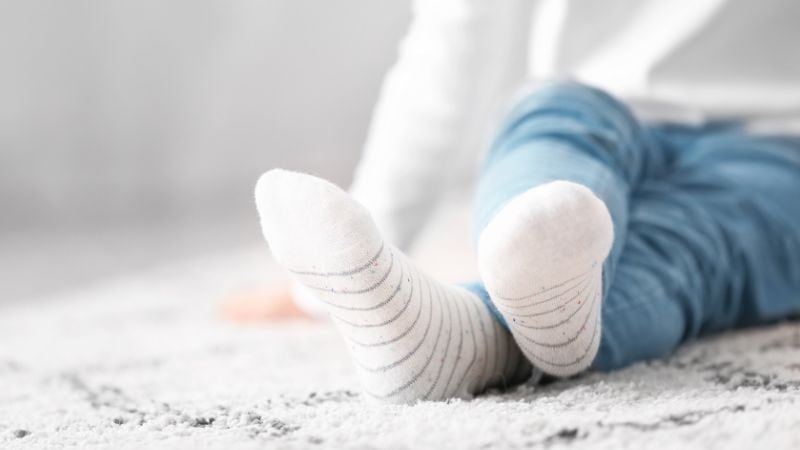
What Are Copper Socks?
Copper socks are a type of footwear that incorporates copper ions into their fabric. These socks are designed to offer the features of regular socks, with the added benefits that copper is believed to provide. They are typically made from a blend of materials, including nylon and spandex, which ensures flexibility, durability, and a snug fit.
Key Components:
- Nylon: Offers durability and a comfortable stretch.
- Spandex: Adds elasticity, ensuring a compressive yet flexible fit.
- Copper ions: Infused into the fabric to strengthen antimicrobial properties.
Copper’s natural properties have been recognized by the Environmental Protection Agency (EPA), which has registered copper as an antimicrobial material. The copper ions within the socks are permanently bound to the fibers, which can help to reduce odors and prevent bacterial and fungal growth.
From an environmental standpoint, copper socks are beneficial as they may endure longer washing cycles without losing the copper ion properties, potentially reducing the environmental impact associated with frequent laundering. Additionally, the reinforced nature of copper-infused fabrics could imply a longer life for your socks, resulting in less waste.
To maximize the potential benefits, ensure you select copper socks with a high-quality fabric blend that includes an effective concentration of copper ions. Remember, while copper socks may offer additional advantages, they should be complemented with good foot hygiene practices for the best results.
The Benefits of Copper Socks

Copper socks blend the functionality of compression therapy with the natural benefits of copper, providing antimicrobial properties and aiding in skin health. These socks are designed to offer both comfort and health benefits, particularly when it comes to your feet, ankles, and legs.
Antimicrobial Properties
Copper ions are inherently antimicrobial, actively working against bacteria, viruses, and fungi. By wearing copper compression socks, you’re not only supporting your muscles but also creating an inhospitable environment for microorganisms that can cause infections and generate odors. This contact-killing ability ensures your feet remain healthier and free from unpleasant smells, which is especially important if you are often in environments where your feet sweat, or you are prone to foot problems.
Promotes Skin and Wound Healing
Copper stimulates collagen and elastin production in the skin, which are key proteins for skin health and elasticity. Copper can also promote angiogenesis, the formation of new blood vessels, which is crucial for wound healing. It enhances the expression of vascular endothelial growth factor (VEGF) and hypoxia-induced factor-1α (HIF-1α), which stimulate new capillary formation and collagen synthesis in the skin. Besides, the compression provided by some copper socks can also aid wound healing by improving circulation, reducing inflammation and edema in the feet and legs. Better blood flow delivers more oxygen and nutrients to the wound site.
Improved Circulation and Reduced Inflammation
- Compression: Copper socks often provide graduated compression, which is tightest at the ankle and decreases up the leg. This compression helps improve blood flow from the legs back to the heart, reducing pooling and swelling in the feet and ankles. The improved circulation delivers more oxygen and nutrients to the muscles, aiding recovery.
- Copper’s anti-inflammatory properties: Copper itself has been shown to have anti-inflammatory effects when in direct contact with the skin. Copper complexes can act as “lures” for the Fenton reaction, generating free radicals that are then immediately inactivated, reducing inflammation. Copper may also help reduce inflammatory cytokine production by immune cells.
- Reducing oxidative stress: Copper has antioxidant properties that can help neutralize damaging free radicals and reactive oxygen species, which contribute to inflammation. By reducing oxidative stress in the muscles and skin, copper socks may help prevent and soothe inflammation.
Comfort and Durability
- Softness and flexibility: The combination of soft, natural fibers like merino wool and bamboo with stretchy materials like spandex allows copper socks to feel soft against the skin while still being flexible and easy to put on. Brushed cotton and merino wool provide a particularly comfortable feel.
- Breathability: The moisture-wicking fabrics used in copper socks are also breathable, allowing air to circulate and preventing feet from overheating. This breathability enhances overall foot comfort.
- Durability: Copper-infused socks are often made with high-quality, durable materials that can withstand heavy wear and tear. The copper content itself may also help prevent the socks from wearing out as quickly.
- Graduated compression: Many copper socks offer graduated compression, with the strongest compression at the ankle gradually decreasing up the leg. This compression supports the feet and legs, reduces fatigue, and can make the socks feel more supportive and comfortable to wear for extended periods.
Limitations and Potential Drawbacks of Copper Socks

- Potential for skin irritation
Some people may have sensitivity to copper, causing skin irritation, itching, or rashes. This is not common but a possibility. Improper fit of compression socks can lead to chafing, itching, bruising, or even reduced circulation if they are too tight. - Environmental and safety concerns
Copper from socks may leach into water through washing and contaminate aquatic environments. Copper is toxic to fish and aquatic invertebrates. Occupational exposure to copper dust or powder during manufacturing can irritate skin, eyes, and the respiratory tract. Proper safety precautions are needed. - Not a substitute for medical treatment
Copper socks should not replace doctor-prescribed treatments for infections, poor circulation, or wounds. It’s best to consult a physician before use, especially with pre-existing medical conditions. - Limitations of available studies
Many of the potential benefits are based on small studies or anecdotal reports. More rigorous, large-scale trials are needed. Some studies on copper oxide materials were sponsored by companies selling these products, which could introduce bias.
Who Can Benefit From Copper Socks?
If you’re someone who is on their feet all day, such as a nurse, teacher, or retail worker, you might find relief in wearing copper-infused compression socks. The compression can help reduce swelling and fatigue in your legs.
Athletes may also see benefits from these socks. They are designed to support muscle recovery by reducing muscle swelling and facilitating the removal of lactic acid. If you’re involved in sports or fitness, copper socks could be a valuable addition to your gear.
People with circulation issues, such as those with varicose veins or diabetes, may find that copper compression socks help improve blood flow and decrease the likelihood of swelling. However, it’s essential to consult your healthcare provider before using them.
Here’s a quick glance at who may find copper socks beneficial:
- On-your-feet Professionals: Nurses, chefs, and teachers may experience less leg fatigue.
- Travelers: Long flights can be more comfortable as these socks may prevent your legs from swelling and feeling heavy.
- Active Individuals: Whether you’re a jogger or a gym enthusiast, compression can facilitate recovery.
- Those with Circulatory Problems: Individuals with conditions affecting blood flow may notice improvements in comfort and health.
It’s clear that a range of people can benefit from copper socks. It’s important to choose the right level of compression and to ensure the correct fit for maximum benefit. Always consult a healthcare professional if you have specific health concerns or conditions before beginning any new treatment.



